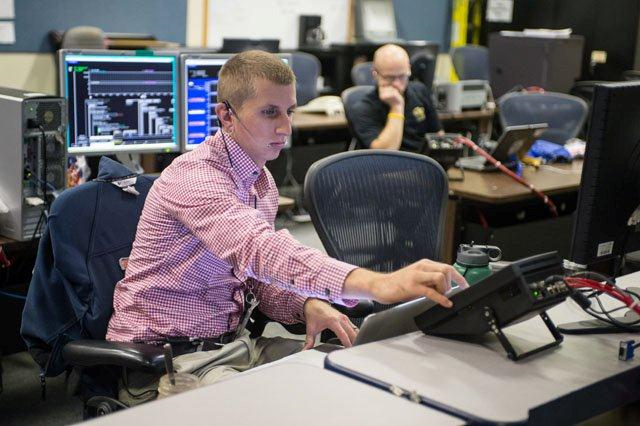
There’s nothing better you can do for your kids than helping them understand how the world they live in works. Mother Nature is all around us, so it’s good to protect her as much as we can. And since kids love to use games to learn, here’s how playing can help them develop a better understanding of the world.
Take them outside
You can’t teach children about nature if you’re not going outside, right? So it’s good to plan different sorts of outdoor activities even from a very young age, like a few months. An infant, just like a toddler or an older child will adore playing with the grass, discovering new sounds, smells, and textures.
Hiking is a great activity and you can start doing that immediately after a child learns how to walk. Taking them in such hiking trips will help them understand rules as well as see different landscapes and ecosystems.
Now’s your chance to explain how volcanoes work, how glacial landforms appear as well as to discuss the fauna and vegetation of a certain place. You should also take the time to answer the children’s questions as they go. Don’t be afraid to explore either, particularly if you get the best survival watch. The children will love this new adventure, and you can get plenty of learning opportunities.
Play “what if” games
Allow your children to make up stories about the things they see. That enhances their imagination, helping them make better correlations between the things they see outside. Storytelling helps connects different plants, animals, and landforms, and the kids are doing all the guesswork.
For example, you can hike on a mountain with abrupt, calcareous cliffs, little vegetation, and scarce water sources. So ask the children how they think evergreen trees or mountain goats can withstand in this type of terrain. Ask them how they think these mountains got to have these steep cliffs in the first place and if they can find a link to the weather.
You can actually start by personifying a certain animal you see on your way, like Roger the Badger or Annie the Deer. What are their stories? Where do they live? What do they eat? What skills do they have? All these games will help kids remember more about the things they see.
Help them collect things
Collecting some of the most important things on a hike is like having a memento of all the great stuff they saw. Of course, you can always take lots of photos as well, so you can connect the dots and have the story of your hike.
You can gather leafs from the trees you saw on your way, and attach printed photos of those trees with a few background information for each. You can do the same with pebbles, snail shells or feathers.
After each trip in the wilderness, you’ll get an album that your kids can revisit anytime they want to. They can also add new information to this album, new photos as they visit the same reservation again, or start a new album from scratch.
You can also build toys from the things you collect. If you collect enough chestnuts, for instance, you can paint their white parts in different colors then use the chestnuts for various games that require teams or keeping a score.
Sleep under the open sky
If you want to combine the children’s sense of adventure with stories, awe, and mystery, then spending a few nights outside is the thing to do. You can teach kids how to set up their shelters for the night, how to build a campfire and how to make sure this doesn’t spread out into a wildfire.
You get an invaluable chance of looking at the night’s sky, to admire the stars and moon, but also to teach children a bit about galaxies, constellations named after the Ancient Gods or more advanced things like black matter, black holes and the origins of the Universe.
Teach them survival skills
This is another great way to teach them how they can interact with nature. It’s good that kids learn all sorts of information and trivia about animals, plants, and landscape, but it’s even better if they learn how to use all these facts.
The first thing children should know is how they can take care of their equipment. And since it’s not always wise for them or for you to pack a ginormous backpack, it’s great to find out how to choose and use versatile items.
For instance, you can teach them how to waterproof boots, so they can wear them in different weather. You can also teach them how to make knots that hold, how to set up a tent or improvise a shelter when they have no tent. Learning how to use a map and compass to find their location is another very useful skill to have outdoors.
Get them a pet
It’s great if you can take kids outdoors in Natural Reservations or in safaris so they can see the wildlife around them. But it’s also a good idea for the kids to have a pet, whether at home or a class pet.
That will teach them how to take care of another living being, what that pet eats, when it sleeps, and how it interacts with the world around it. If you decide to get an ant farm, this teaches children certain information about working together. Or you can help them make such a cool dwelling place for ants on their own, it’s likely they’ll feel more invested in the ants’ lives this way.
What will you do?
With so many wonderful activities you can do with your children, the ones we’ve discussed are just the tip of the iceberg. But at least you have an idea of how you can combine stores and games to raise the kids’ curiosity so they’ll want to find out more about Nature and what it can offer us.
Author Bio
Rebecca lives in USA, but loves hiking all over the world. Her favorite is Everest Base Camp Trek in Nepal. It usually takes 16 days, but she likes to slow down, enjoy mountains, company of other adventurers and take more pictures, so it took her 28 days last time. Another of her passion is the ocean, so all short and long hikes along the ocean shore bring a lot of joy. She also writes for HikingMastery.com.



